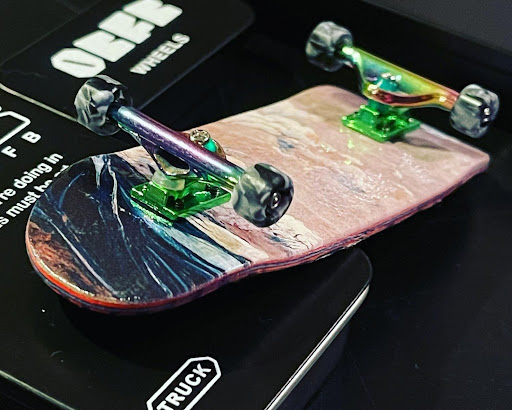Are you a beginner in fingerboarding or looking for the best fingerboard to purchase? Then, this guide is for you. Fingerboarding is an exciting and new fashion game; you need appropriate parts and tools and experience this fun activity.
However, fingerboards can’t work like a skateboard in climbing ramps and hills, but they are still fun to use. Before you move on to exploring new tricks, ensure you buy a high-quality fingerboard. You can only perform the tricks perfectly if you have a premium-quality fingerboard.
In this post, you’ll learn more about fingerboarding and how to set up a custom fingerboard.
What is Fingerboard?
A fingerboard is a miniature version of a skateboard and is also known as Tech Deck. In short, finger boarding is when a person rides a fingerboard using fingers rather than their feet. It typically uses the index and middle finger; people perform fingerboard tricks replicated from skateboarding. Moreover, it’s a fun activity that is enjoyed by all ages.
Components of Fingerboard
You can begin with any basic fingerboard model if you are a beginner and getting familiar with fingerboards. The measurement or other features are essential. Even the exterior of the fingerboard is manufactured with plastic, wooden, premium fingerboard wheels and interchangeable trucks.
Here are some essential components of a fingerboard:
Deck –
The premium fingerboard deck is the main body of the fingerboard, where you place your fingers to play the fingerboard and perform tricks. It can be made up of a broad type of material, all of which can affect the quality of the board. Some premium fingerboard decks are made up of plastic or paper, but most are made from wood. Wooden decks provide the most authentic replication for a skateboard feel and give more power to perform tricks.
Grip tape –
The grip tape is placed directly on the deck of the boards and is similar to the tape you would find on a skateboard. The objective of the grip tape is to have more control and prevent the fingers from falling off the deck and sending your fingerboard flying.
Bushings –
Bushing plays completely different functions on a fingerboard than on a skateboard. On a skateboard, the bushing help the skateboard turn, while on a fingerboard, the bushing help holds the wheels in place mainly to increase the capacity for doing tricks and looks. Bushings are usually made of soft material in the form of rubber or plastic.
Trucks –
Trucks are on the below side of the deck that holds the bushings and wheels. There are numerous types of premium fingerboard trucks available on the market. There is a definite quality difference, depending on what you buy. The kind of truck you use depends on how invested you are in finger-boarding.
Beginner Guide on How to Set Up a New Fingerboard
To assemble a professional fingerboard, you’ll need to follow some steps; otherwise, you’ll get confused and make mistakes.
Here’s a step-by-step guide to setting up a fingerboard:
- Join the truck of the fingerboard to the deck with the given screws. The trucks are not threaded, and it is normal. It’s better to set the screw in the truck before joining them to the deck. Remove the screws and join the car to the deck.
- Ensure the screws go through the trucks. They will fall off if the screws are not tight. Putting the screws in the truck before joining them to the deck is better. Remove the screws and join the fingerboard truck to the deck.
- Place the wheel on the axle; the broad side of the wheel should face outward. Place the nut in the tool and tighten the wheel to the axle. You need to ensure the nut is tight but doesn’t prevent the wheel from turning.
- Remove the tape.
- With the use of filer or fine sandpaper, remove the excess foam tape.
Conclusion
After reading this guide, a few things are clear in your mind before buying your new fingerboard. You can revisit this article to understand and read the steps to assemble the fingerboard. Hope it helps!








